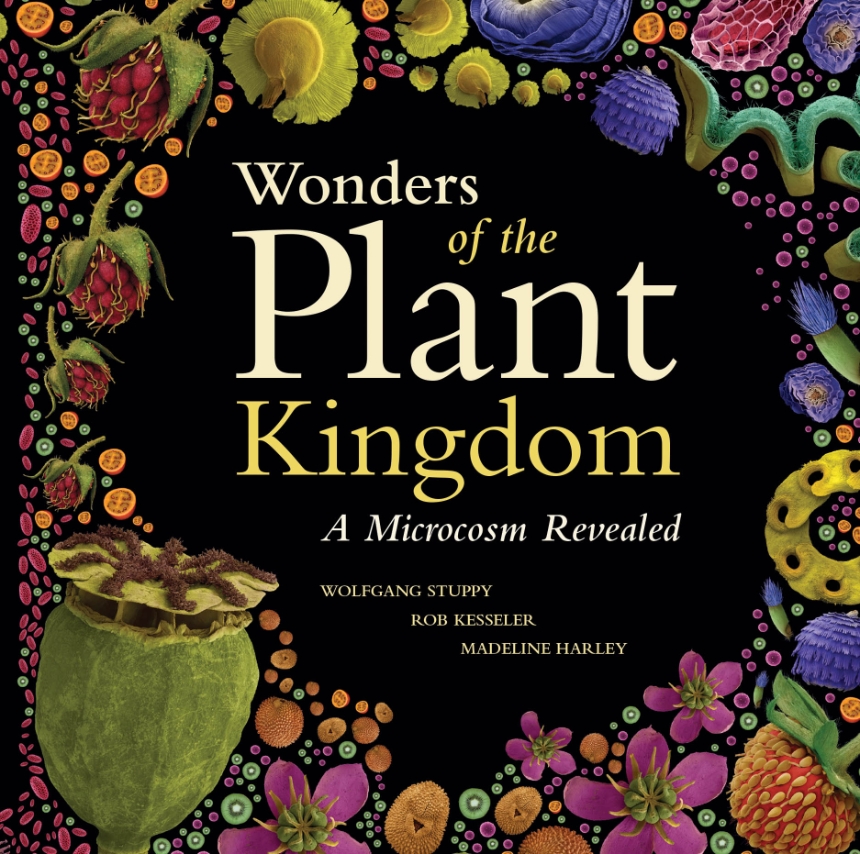Wonders of the Plant Kingdom
A Microcosm Revealed
With Wonders of the Plant Kingdom, the naked eye gets an unforgettable boost. A stunning collaboration between science and art, this gorgeous book presents hundreds of images of plants taken with a scanning electron microscope and hand-colored by artist Rob Kesseler to reveal the awe-inspiring adaptations all around us. The surface of a peach—with its hairs, or trichomes, and sunken stomata, or breathing pores—emerges from these pages in microscopic detail. The dust-like seeds of the smallest cactus species in the world, the Blossfeldia liliputana—which measures just twelve millimeters fully grown—explode here with form, color, and character, while the flower bud of a kaffir lime, cross-sectioned, reveals the complex of a flower bud with the all-important pistil in the center.
Accompanying these extraordinary images are up-to-date explanations of the myriad ways that these plants have ensured their own survival—and, by proxy, our own. Gardeners and science buffs alike will marvel at this wholly new perspective on the world of plant diversity.
160 pages | 250 color plates | 9 3/4 x 9 3/4 | © 2015
Biological Sciences: Botany, Ecology, Natural History
Reviews
Table of Contents
Introduction
The Incredible Life of Plants
Precious dust
The difference between pollen, spores and seed
Those who copulate in secret • No match for a seed
An invisible microcosm • Apertures • Finding the other half
Pollination by wind and water • Pollination by animals
Beauty lies in the eye of the beholder • The insect
pollination syndrome • Bee flowers • Butterfly and moth flowers
Flies and beetles as pollinators • The bird pollination syndrome
The bat pollination syndrome • Typical bat flowers
Exotic pollinators • The advantages of animal pollination
Fruits and Seeds
What is a fruit and what is a vegetable? • The true nature of fruits
The various ways to get around • Wind dispersal • Seeds like dust
Masterpieces of Nature • Indirect wind dispersal
Water dispersal • Rafters and sailors • Sea beans
The biggest seed in the world • Explosive strategies
Animal couriers • Tenacious hitchhikers • Caltrops, devil’s claws
and other sadistic fruits • Reward rather than punishment
Small rewards for little helpers • Juicy temptations
Colourful appendages • Fraudsters of the plant kingdom
The everlasting beauty of plants
Phytopia
The ‘Making Of ’ Wonders of the Plant Kingdom:
How Science Becomes Art
The Millennium Seed Bank:
The World’s Largest Plant Conservation Initiative
Appendices
Glossary • Bibliography • Index
Acknowledgments • Picture Credits
